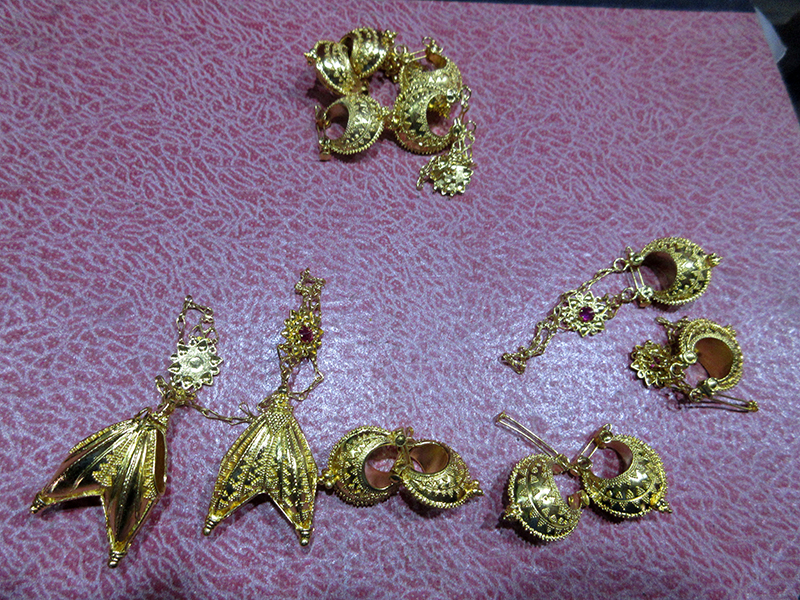Rini Barman



Grant Period: over one year and six months
Rini Barman is a Delhi-based researcher and a consulting editor for the Reader’s Digest India. She has also worked with the India Today Group. She completed her MA in English Literature from Jamia Milia Islamia, New Delhi in 2014 and has published various essays on translating women’s folk songs, Lakshminath Bezbarua’s collection of Assamese folktales, Deveodaxi tradition of Assam, and Assamese food.
Axomiya Gohona or the Assamese traditional jewellery is a particular kind of gold-washed jewellery made in the state, the market for which has increased over the years for many reasons. While the usage of this traditional jewellery across local rituals has enabled it to expand its reach beyond the communities who initially wore them, mobility has ensured that people have carried their tastes for this jewellery to newer areas. The growing migrations from rural to urban spaces have led the jewellery industry to cater to the needs of a new audience and address their rural nostalgia in urban spaces. Many of the designs and motifs are derived from rural and tribal culture and lifestyle with little or no relevance in their use in the urban locations. However, they significantly influence aesthetic choices of the customers of the jewellery industry. Contractors and entrepreneurs, who are otherwise actively seeking to modernise the methods of making jewellery, have moved to handmade processes at a time when machines are rapidly replacing humans in the production spaces.
This project will enable Rini to look at the continuing popularity of the traditional jewellery designs - Doog-Doogri, Thuria, Loka, Paro, Jon Biri, Dhol Biri – all of which are derived from motifs from rural culture and lifestyles. She will study this ‘retreat to the rural’ as a dominant strategy of the upper middle class to construct their identity and in that context jewellery being the ‘static carriers’ of nostalgia. At the same time, she will explore this desire of the bourgeoisie of Assam to transform the Axomiya Gohona into a cosmopolitan ornament to alleviate their anxieties of fitting in to a modern society. The jewellery industry itself is going through several changes with the cheaper gold-plated jewellery becoming more popular as opposed to the 24-carat gold jewellery. As the industry undergoes this shift, Rini will examine the rise of new entrepreneurs who market this jewellery in the urban setting and compare this growth to the invisible nature of labour extracted from the rural base in the production of this jewellery.
Rini will focus on three main manufacturing districts, Barpeta in lower Assam and Jorhat and Nagaon in upper Assam. This is because the jewellery of upper Assam is a status symbol and is considered a superior form of art than that of the jewellery produced in the lower Assam, which is affordable because it is electroplated. The economic disparities influence the designs of the ornaments and the recent zeal to imitate the designs of upper Assam shows an internalised form of cultural hegemony that this study will delve into. Though the term Axomiya Gohona carries with it connotations of a classical and authentic piece of jewellery, the aim of this research project would be to show how this art form condenses, appropriates and modifies elements from everyday life of people based in rural areas for those who live in urban spaces. Rini will interview a select set of jewellery makers – the labour that goes into the making of the jewellery in rural areas; and young entrepreneurs - who bring the jewellery to an urban consumer base, to understand the difference between their socio-economic conditions. This will help her to study how labour is made invisible in this industry that is of vital importance to the cultural heritage of Assam.
The project addresses IFA’s programmatic concern of supporting work in unexplored areas. So far the jewellery industry of Assam has neither been properly researched nor documented. Through this project, Rini aims to fill this crucial gap and contribute to the research and documentation of this old yet vital industry in Assam. The outcome of this project will be monograph. Recorded interviews, audio, video and photo documentation from the field work along with the monograph will be submitted to IFA as deliverables of this project by the researcher. The budget is commensurate with the proposal.
